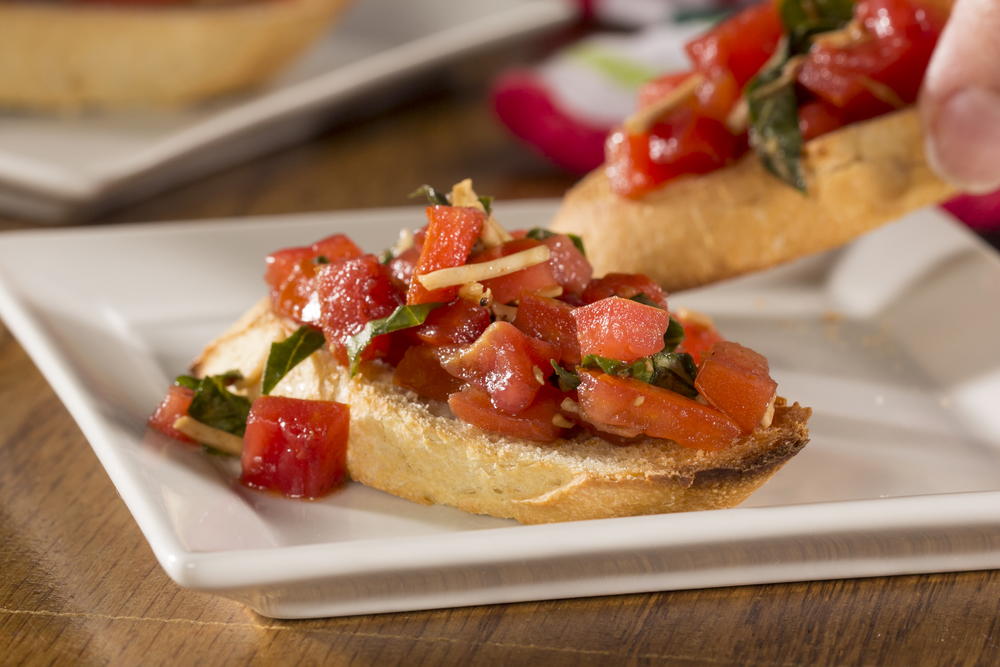As the festive season approaches, the air fills with the enchanting aroma of Italian Christmas recipes, a symphony of flavors that has been passed down through generations. In Italy, Christmas is a time for family, feasting, and celebrating the culinary traditions that define this vibrant culture.
Join us on a culinary adventure as we explore the delectable dishes, regional variations, and modern interpretations that make Italian Christmas cuisine a feast for the senses.
From the iconic “Feast of the Seven Fishes” on Christmas Eve to the irresistible panettone and pandoro, Italian Christmas recipes are a testament to the country’s rich culinary heritage. Let’s delve into the heart of Italian Christmas cuisine, discovering the secrets behind these beloved dishes and how they bring families and friends together during this special time of year.
Introduction to Italian Christmas Recipes
Christmas is a time of great joy and celebration in Italy, and food plays a central role in the festivities. Families gather together to share elaborate meals, often consisting of traditional dishes that have been passed down through generations.The Italian Christmas tradition is rich in symbolism and ritual.
The Christmas Eve meal, known as the “Cena della Vigilia,” is typically meatless and features dishes made with fish, vegetables, and pasta. On Christmas Day, families gather for a large feast that may include roasted meats, seafood, and traditional desserts such as panettone and pandoro.
Traditional Italian Christmas Dishes
The Italian Christmas table is a feast of flavors and traditions. Christmas Eve is known as the “Feast of the Seven Fishes,” where families indulge in a seafood-centered meal symbolizing good fortune and abundance. Traditional Christmas dishes vary by region, but certain favorites appear on tables throughout Italy.
Feast of the Seven Fishes
The “Feast of the Seven Fishes” is a centuries-old tradition believed to have originated in Southern Italy. The number seven holds significance in Catholicism, representing the seven sacraments or the seven days of Creation. Each seafood dish is believed to bring good luck and prosperity in the coming year.
- Baccalà (Salted Cod): A staple of the Feast of the Seven Fishes, baccalà is salted and dried codfish, typically soaked and rehydrated before cooking. It can be served fried, baked, or in stews.
- Calamari Fritti (Fried Squid): Calamari, or squid, is a popular seafood choice for Christmas Eve. It is lightly battered and fried until golden brown, served with lemon wedges and aioli.
- Shrimp Cocktail: A classic appetizer or main course, shrimp cocktail features cooked shrimp served chilled with a tangy cocktail sauce.
Traditional Pasta Dishes
Pasta is a cornerstone of Italian cuisine, and Christmas is no exception. Various pasta dishes grace the table, each with its own regional variations.
- Lasagna: A beloved lasagna is a layered pasta dish with sheets of pasta, ragù (meat sauce), béchamel sauce, and cheese. It is baked until golden brown and bubbly.
- Tortellini in Brodo (Pasta in Broth): A traditional Christmas dish in Northern Italy, tortellini are small, filled pasta served in a flavorful broth. The filling typically includes meat, cheese, and vegetables.
- Spaghetti al Forno (Baked Spaghetti): A Southern Italian specialty, spaghetti al forno is a baked pasta dish made with spaghetti, tomato sauce, cheese, and often hard-boiled eggs and meatballs.
Regional Variations in Italian Christmas Cuisine

Italy’s diverse culinary heritage is reflected in the regional variations of its Christmas cuisine. Each region has unique ingredients, cooking techniques, and traditional dishes that make their Christmas celebrations special.
The following table compares Christmas dishes from four different regions of Italy: Lombardy, Tuscany, Sicily, and Campania.
| Region | Traditional Christmas Dishes | Unique Ingredients and Cooking Techniques |
|---|---|---|
| Lombardy | Panettone, Tortellini in Brodo, Cotechino con Lenticchie | Saffron, butter, and rice are commonly used. Risotto and polenta are popular dishes. |
| Tuscany | Ribollita, Castagnaccio, Panforte | Chestnuts, olive oil, and wild boar are commonly used. Simple and rustic dishes are favored. |
| Sicily | Pasta con le Sarde, Focaccia, Cannoli | Seafood, almonds, and citrus fruits are commonly used. Sweet and savory dishes are both popular. |
| Campania | Struffoli, Spaghetti alle Vongole, Baccalà alla Griglia | Seafood, tomatoes, and mozzarella cheese are commonly used. Neapolitan cuisine is known for its rich flavors and bold sauces. |
Diverse Culinary Heritage
The regional variations in Italian Christmas cuisine reflect the country’s diverse culinary heritage. Each region has its own unique traditions and influences that have shaped its cuisine. For example, Lombardy’s proximity to the Alps has influenced its use of butter and cheese, while Tuscany’s mild climate has allowed for the cultivation of a variety of fruits and vegetables.
The result is a rich and varied culinary landscape that offers something for everyone. Whether you prefer hearty northern dishes, rustic Tuscan fare, or the vibrant flavors of southern Italy, you’re sure to find a Christmas meal that you’ll love.
Italian Christmas Desserts
Italian Christmas celebrations are incomplete without a spread of delectable desserts. From the iconic panettone to the rich and flavorful panforte, these sweet treats hold a special place in Italian Christmas traditions.
Panettone, Pandoro, and Panforte
Panettone, a traditional Christmas cake, is a symbol of joy and prosperity. This tall, cylindrical cake is characterized by its soft and airy texture, studded with candied fruits, raisins, and citrus zest. Variations of panettone include pandoro, a star-shaped cake with a dusting of powdered sugar, and panforte, a dense and chewy cake made with nuts, fruits, and spices.
Preparation and Flavors
The preparation of these desserts is a labor of love, often passed down through generations. Panettone, in particular, requires a long and delicate process of rising and proofing to achieve its signature lightness. The unique flavors of these desserts come from a combination of high-quality ingredients, including fresh fruits, nuts, and spices, which blend together to create a symphony of tastes and aromas.
Biscotti and Amaretti
Italian Christmas cookies, known as biscotti and amaretti, are a delightful addition to the holiday table. Biscotti, twice-baked cookies, are crispy and flavorful, often flavored with anise, almond, or chocolate. Amaretti, on the other hand, are soft and chewy almond cookies with a distinctive bittersweet flavor.
Classic Italian Christmas Cookie Recipe: Biscotti
To make classic Italian biscotti, you will need the following ingredients: flour, sugar, eggs, butter, baking powder, salt, anise seeds, and your choice of nuts or dried fruits. Simply combine the dry ingredients, then add the wet ingredients and mix until a dough forms.
Shape the dough into logs, bake them until golden brown, slice them diagonally, and bake them again until crispy. Enjoy your homemade biscotti with a warm cup of coffee or tea.
Drinks and Accompaniments
The festive atmosphere of Italian Christmas is incomplete without an array of beverages and delectable side dishes. Wine, particularly red varieties, holds a prominent place, accompanying the hearty Christmas feast. Sparkling wines add a touch of elegance and celebration to the occasion.
Wine Pairing Recommendations
When selecting wines to pair with your Christmas dishes, consider the flavors and textures of the food. For example, a robust red wine like Barolo or Amarone della Valpolicella complements rich meat dishes such as roast lamb or braised beef.
Lighter red wines like Sangiovese or Montepulciano d’Abruzzo pair well with pasta dishes and poultry. For seafood dishes, opt for crisp white wines like Pinot Grigio or Vermentino.
Traditional Side Dishes
Italian Christmas side dishes offer a delightful accompaniment to the main courses. Roasted vegetables, such as Brussels sprouts, carrots, and potatoes, are a popular choice. Salads, often featuring seasonal ingredients like radicchio and pomegranate, provide a refreshing contrast. Antipasti platters, brimming with cured meats, cheeses, and olives, offer a delectable appetizer or snack throughout the festivities.
Presentation and Atmosphere
Creating a captivating ambiance for an Italian Christmas dinner is essential for a memorable celebration. The presentation and atmosphere should reflect the warmth and festivity of the occasion.
Table Setting
Set the table with elegant linens and festive tableware. Use colors that evoke the Christmas spirit, such as deep red, emerald green, or gold. Consider using traditional Italian Christmas ornaments like glass baubles, ceramic figurines, or fresh greenery as centerpieces.
Table Decorations
Adorn the table with traditional Italian Christmas decorations. Hang strings of twinkling lights, display nativity scenes, or place scented candles around the room. Use festive garlands and ribbons to create a warm and inviting atmosphere.
Ambiance
Create a welcoming ambiance by playing traditional Italian Christmas music softly in the background. Set the mood with the gentle glow of candles and ensure the room is well-ventilated for a comfortable gathering.
Modern Interpretations of Italian Christmas Recipes

Contemporary chefs are reimagining classic Italian Christmas dishes, infusing them with modern cooking techniques and ingredients to create innovative Christmas menus. These reinterpretations aim to preserve the essence of traditional Italian Christmas cuisine while introducing exciting flavors and textures.
Fusion Dishes Blending Italian Christmas Traditions with Other Cuisines
Fusion dishes that blend Italian Christmas traditions with other cuisines are gaining popularity. Chefs are drawing inspiration from various culinary traditions, resulting in unique and flavorful dishes. For example, some chefs incorporate Asian ingredients like soy sauce, ginger, and sesame oil into classic Italian Christmas dishes, creating a harmonious blend of flavors.
Others combine Italian Christmas dishes with elements of Mexican cuisine, such as using spicy salsas and guacamole.
Final Conclusion
As we conclude our exploration of Italian Christmas recipes, we are left with a profound appreciation for the diversity, creativity, and passion that define this culinary tradition. From the traditional dishes that have stood the test of time to the innovative interpretations that keep the spirit of Christmas alive, Italian Christmas cuisine is a testament to the enduring power of food to bring people together and create lasting memories.
Whether you are a seasoned home cook or simply a lover of Italian food, we hope this journey has inspired you to embrace the magic of Italian Christmas recipes and share the joy of the season with those you love.
FAQ Corner
What is the significance of the “Feast of the Seven Fishes” on Christmas Eve?
The “Feast of the Seven Fishes” is a traditional Italian Christmas Eve meal that symbolizes abundance and prosperity. The number seven holds religious significance in Christianity, and the fish represent the seven sacraments of the Catholic Church. This feast is a time for families to gather and enjoy a variety of seafood dishes, including baccalà (salted cod), calamari fritti (fried squid), and shrimp cocktail.
What are some popular Italian Christmas desserts?
Panettone, a sweet, dome-shaped cake with candied fruit and raisins, is the quintessential Italian Christmas dessert. Pandoro, a similar cake with a star shape, and panforte, a dense fruitcake, are also popular choices. Additionally, Italian Christmas cookies, such as biscotti and amaretti, are often served as treats during the holiday season.
How do regional variations influence Italian Christmas cuisine?
Italy’s diverse culinary heritage is reflected in the regional variations of Christmas dishes. In Lombardy, risotto alla milanese is a traditional Christmas dish, while in Tuscany, roasted pork loin is a popular choice. In Sicily, pasta alla Norma, a pasta dish with eggplant, tomatoes, and ricotta salata, is often served on Christmas Eve.
These regional variations showcase the unique ingredients and cooking techniques that make Italian cuisine so diverse and captivating.
